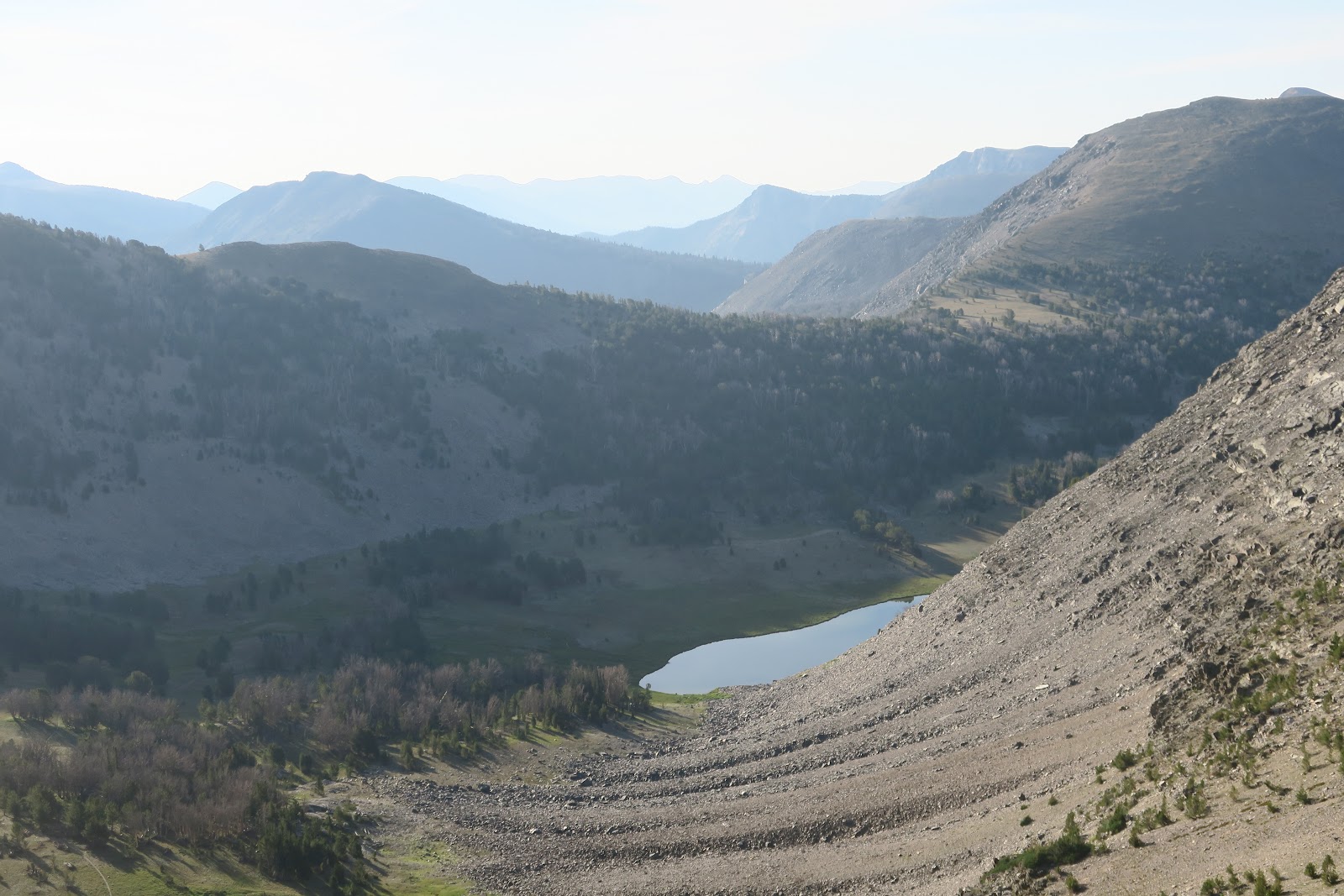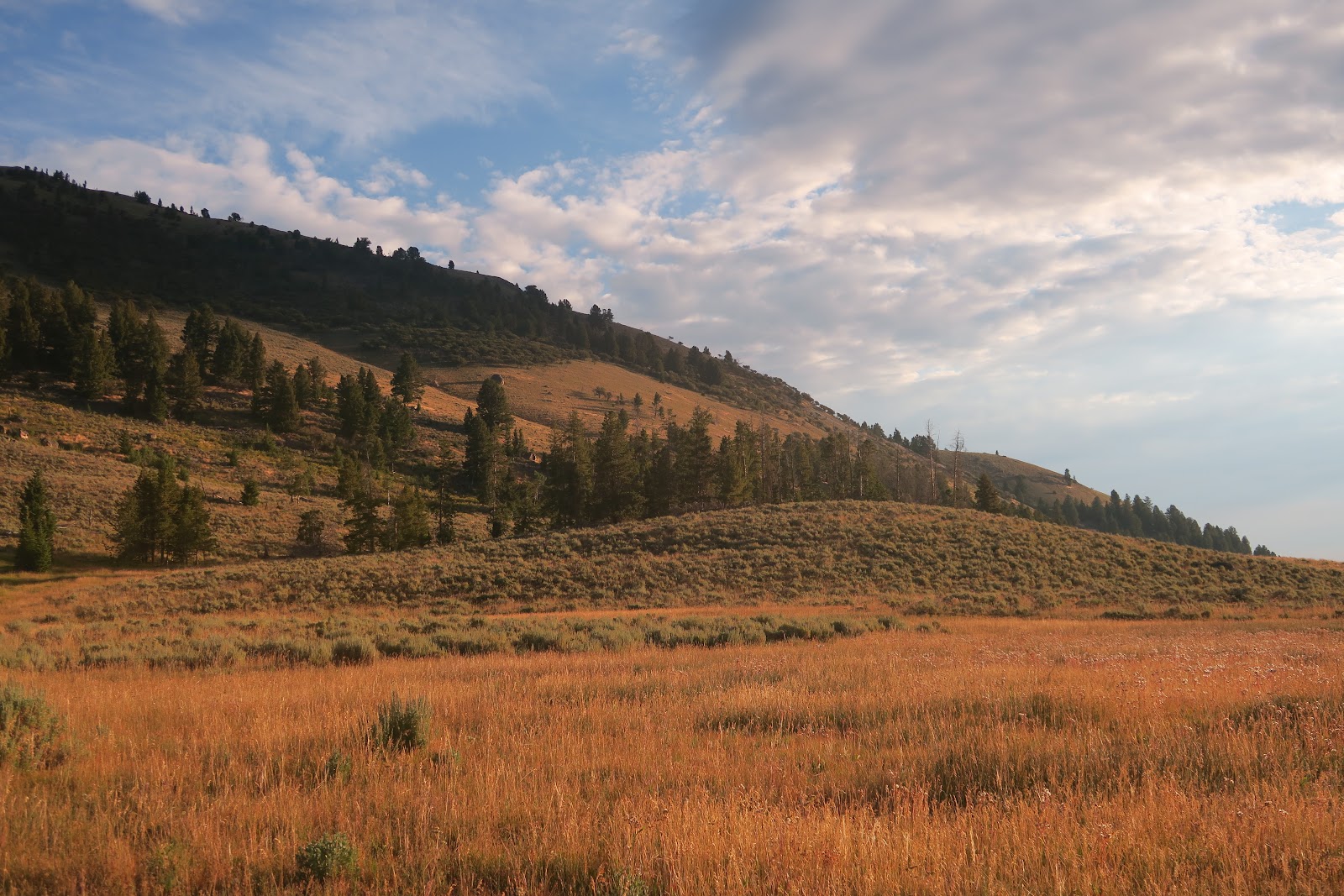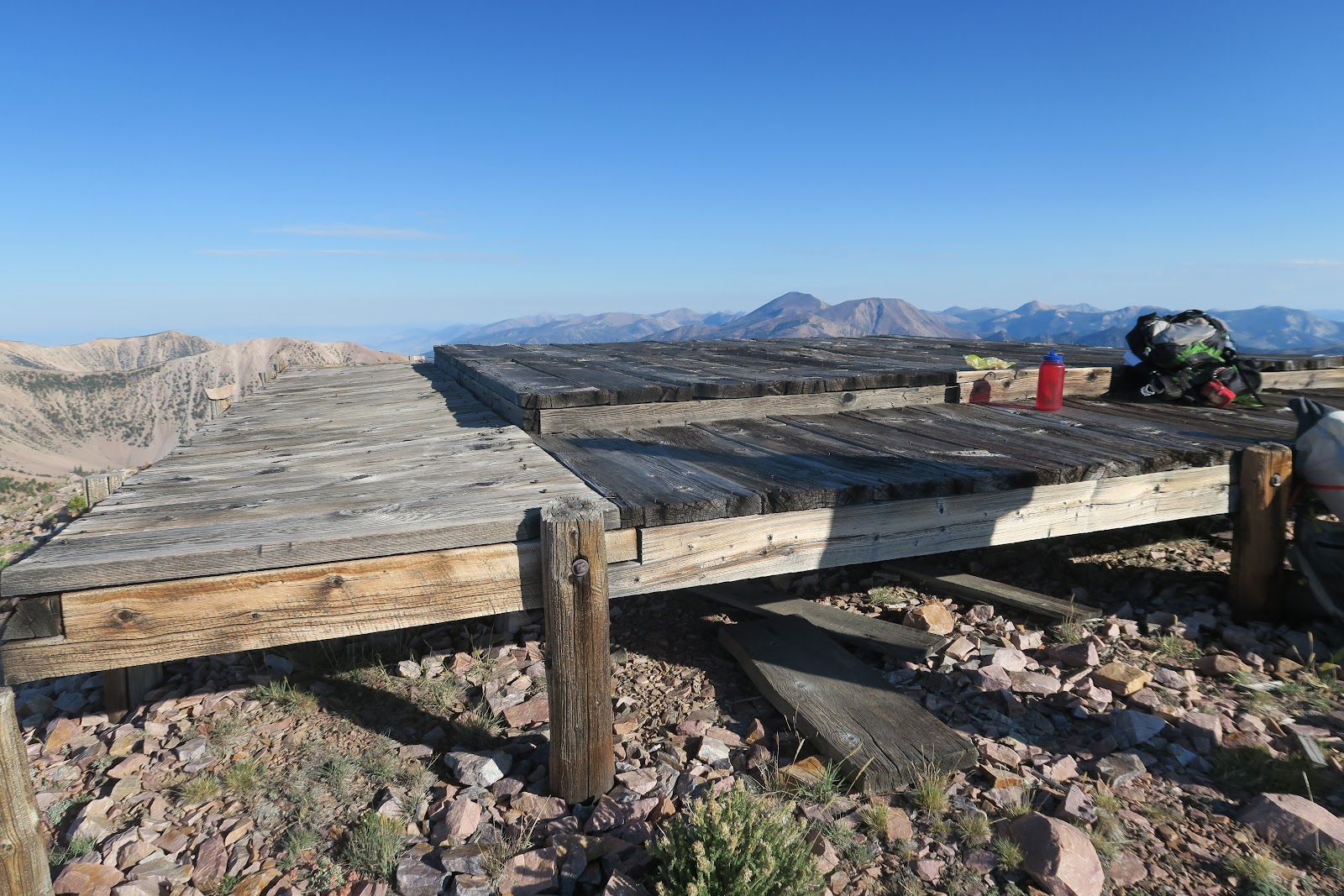White Cloud Peaks Loop, Idaho
Total Mileage: 35 miles (approximate, including side-trips)
Total elevation gain: 7,500 feet (approximate)
Scenery: 10
Solitude: 8
Difficulty: 7
Our
itinerary: 2 nights 3 days
Day1: Fourth of July Creek trailhead --Hammock Lake
Day2: Hammock Lake -- Upper Chamberlain Lake
Day3: Hike out
Another great place in Idaho. The white cloud range is probably the 2nd most popular backpacking places in Idaho (1st is in the Sawtooth). Although it is popular in Idaho, it is much much less hikers compared to California or New England.
 |
Ants Basin
|
First, we started at Fourth of July Lake trailhead, and then hiked up to the pass. From the pass, Ants Basin was seen. From the top, white-colored mountains were visible. I got it why the area is called White Clouds Peaks. It was a perfect sunny day without clouds. Only White Clouds in the scene and that was appealing its white color by reflecting shiny sunlight. The entire Ants Basin was warmly green in the sun. No humans at all except for us. It was very peaceful. Next moving stuff we saw was pika. Always pika is cute.
 |
Born Lakes
|
At 4.5 miles, we arrived Born Lakes. This lake is really beautiful and it is popular destination for an easy overnight backpacking. The lake looked sky blue at the first sight. Later, from other angle, it is mesmerizing emerald green. Born Lakes are really beautiful and enjoyable from all directions.
 |
Four Lakes Basin
|
To make a loop for this backpacking, off-trail starts from Born lake. First you climb scree up to 10,220 foot pass. This is an amazing view. You see Ants Basin and White Clouds Peak in the distance, then you see beautiful Four Lakes Basin below. There are quite pretty four lakes below and we descended into that. Whoa, this was quite steep! We checked out all four lakes. They are really hidden. I felt so lucky having an opportunity to look them. SO PRETTY!! For some reason, nice trail was there from the fourth lake to the next quite lake even though that was officially no trail area. It used to be a trail? Or it was a mountain goat path? However, once we reached the Quiet lake, complete off-trail adventure came back.
 |
Quiet Lake
|
Quiet lake (literally this name) is peaceful as you can imagine. Quiet lake was really deep dark blue, which was exceptional. Then we hike up meadow and scree more to the Scree Lake, then Shallow Lake, then came back to the official trail. Here we saw mountain goat in the distance. They were eating grass in the meadow near the lake. Their fur is fluffy! I could feel fluffy even though they were far. I had seen mountain goat but they were always on the cliff. In White Clouds, they were in the meadow. Mr.N said that they were lazy. I said, "It's OK, because they are cute"
 |
| campsite |
We camped at Hourglass lake for the first night. The lake was completely ours. The campsite was awesome with lake and mountain view.
Next day we went through a couple more lakes of Boulder chain lakes, then wen t down about 2000 feet. Then we again started ascending. A little before we reached the Castle Divide, we decided to do some off-trail portion to go to Castle Lake. The guide book "Backpacking Idaho" indicated that Castle Lake is beautiful, and the author had some tips where to leave the official trail to go there. Those descriptions were helpful usually, but this time it confused us more. First, the book indicated that leaving the trail after a junction with the trail along the Wickiup Creek, but that trail is obviously abandoned and there was not a single hint of used-to-be a trail. Second, the book said that there would be very tall carin when sketchy path starts, but clearly not. We eventually found the sketchy path to the lake: I believe that is a mountain goat path, because it is so narrow on the edge of steep talus. Also , the book said mountain goat is frequently spotted at Castle Lake. The path was really scary, but the worst part was short. The Castle lake is really beautiful and it was worth wondering off-trail for a while. Nobody was at the lake of course, and Mr.N jumped into the lake. Then we came back to an official trail and hiked up to the pass, then we went to the side trail to go to upper Chamberlain lake. We camped there. There was a big horse campsite with a fire ring. Previously at Sawtooth, fire needs to be on the special fire mat, but we didn't bring it. Here in White Clouds, it is allowed to have a fire in the existing fire ring. I was so happy to have fire finally! While Mr.N was in the lake, I started fire :)
 |
Mountain Goat
|
Next morning when we hiked out from upper Chamberlain lake, Mr.N saw something and said, "Oh something there. Is that a dog?" Since dogs are allowed in National Forest there, he thought so. The white small thing moving was actually mountain goat kid! After the small one, three adult mountain goat came to the meadow. It was precious to have a time to observe them.
Until hiking to Washington Lake, there was no humans, but we saw at least 10+ day hikers at Washington Lake which is a couple of miles from the trailhead.
White Cloud has outstanding scenery, wonderful wildlife. I really had a great time.















